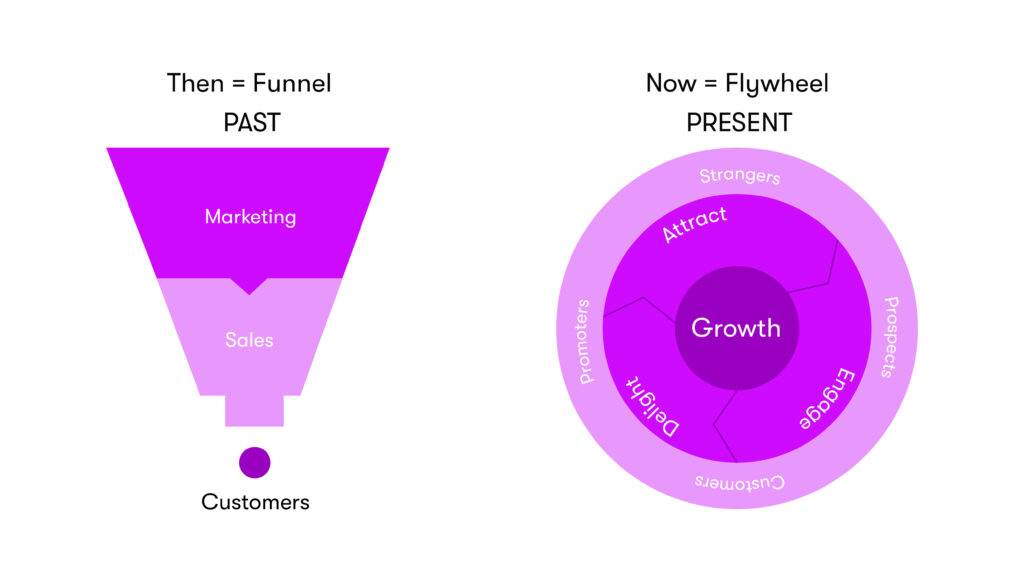
There are many visuals, diagrams, and expressions used in the marketing world to describe the process by which we acquire and retain customers. However, there is probably none so popular as the concept of the sales funnel.
A sales funnel is a series of steps that lead a customer through their purchasing experience. All customers follow similar patterns of behavior, action, and even apprehension, and a sales funnel is intended to identify specific areas of dropoff so that you can patch up the holes in your experience and therefore improve your overall conversion rate. By creating a sales funnel, you can more easily track conversions on a micro-scale using a variety of metrics and identify specific areas for improvement.
There are many different stages in a sales funnel, but the basic idea is that each stage filters out customers who are not ready to buy. The goal is to move as many customers as possible from the top of the funnel (awareness) to the bottom of the funnel (purchase).
The basic stages of a sales funnel look something like this:
- Awareness: In the awareness stage, customers are becoming aware of their needs or problem.
- Interest: In the interest stage, customers are interested in finding a solution to their needs or problem.
- Consideration: In the consideration stage, customers are considering their options for solving their needs or problem.
- Purchase: In the purchase stage, customers are ready to buy a solution to their needs or problem.
By identifying and categorizing each visitor to your website into one of these 4 stages, you can quickly determine what state of mind they are in and what you need to present them in order to usher them into the next stage and closer to making a purchase. Think about it in terms of holding the customer’s hand and personalizing their experience on your website, from the homepage all the way to checkout.
While the sales funnel is a classic and effective model for a reason, some marketers prefer to visualize their sales model in terms of a flywheel. A sales flywheel is a conversion optimization technique that helps you increase sales by continually improving your marketing and website. Just like a traditional flywheel, it starts with a small push and then builds momentum over time.
The goal of a sales flywheel is to create a self-sustaining cycle of sales growth. By continually testing and optimizing your marketing campaigns and website, you can improve conversion rates and increase sales. As you generate more sales, you can reinvest those funds into further optimization, which leads to even more sales.
There are three main stages in a sales flywheel:
- Attract: In the attract stage, you use marketing campaigns and website optimization to draw in potential customers.
- Convert: In the convert stage, you use conversion rate optimization techniques to turn potential customers into paying customers.
- Retain: In the retain stage, you work to keep your customers happy and engaged so they continue doing business with you.
By focusing on all three stages of the sales flywheel, you can create a self-sustaining cycle of sales growth. Picture the customer and their needs being at the center of the flywheel, while your marketing campaigns and website optimization revolve around them.
The sales funnel and the sales flywheel are two conversion optimization techniques that can help you increase sales and improve your overall conversion rate. While they both have their own benefits, the key is to focus on the customer and their needs at every stage. By doing so, you can create a personalized experience that will guide them through the conversion process and make them excited to do business with you.


